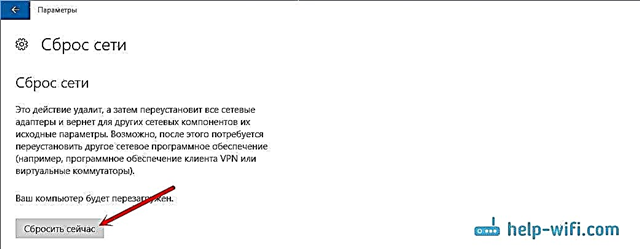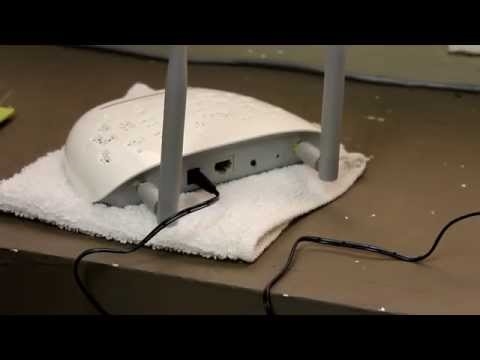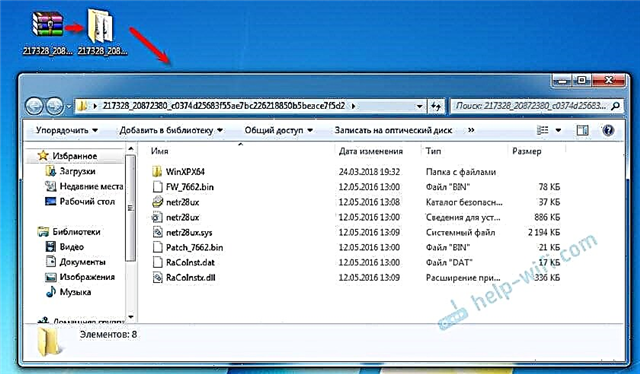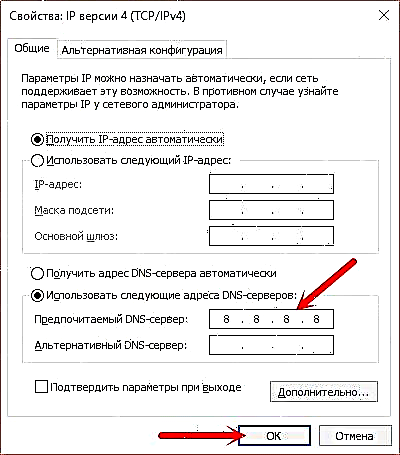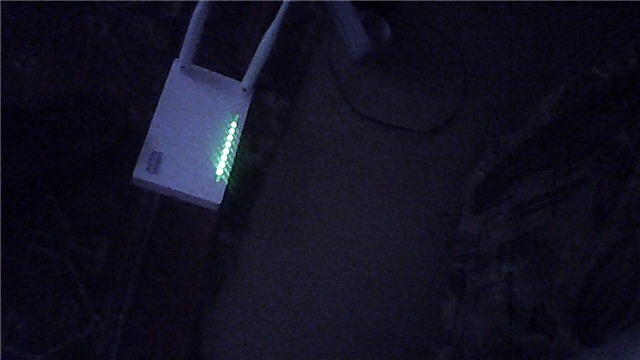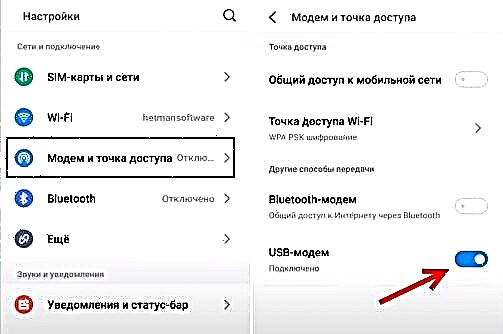A modern phone is such a versatile device that it can act as a router or modem without any problems. You can distribute the Internet from your phone to other devices: a phone, tablet, computer, laptop, TV, game console, etc. There are three ways to organize the distribution of the Internet: via Wi-Fi, via a USB cable, and via Bluetooth. All three methods are available on Android phones and iPhones. You can share mobile Internet 2G / 3G / 4G (LTE) from your phone, access to which is provided by our mobile operator.
Before moving on to the step-by-step instructions, I want to draw your attention to the following points:
- Many operators block the distribution of the Internet to other devices. That is, you can use the mobile Internet on your phone without restrictions, but you cannot distribute it to other devices. Or on certain conditions: for an additional fee, only a certain amount of data, etc. It all depends on the operator and the tariff fee (you need to study the conditions in detail). MTS, YOTA, Beeline, Tele2, etc. have such restrictions. If earlier this ban was bypassed by simply changing the TTL value, then in 2020 operators began to apply more serious protection. We'll come back to this at the end of the article.
- Most often, the Internet from the phone is shared via Wi-Fi. Since almost all devices can connect to a Wi-Fi network. This is the easiest and fastest way.
- When distributing the Internet from Android to a computer via cable, the phone can use not only the mobile Internet, but also the Wi-Fi connection. Work as a Wi-Fi receiver.
- You can distribute the Internet to a TV only via Wi-Fi (while the TV must have Wi-Fi). Bluetooth and USB cable will not work.
- A limited number of clients can be connected to the access point on the phone. Usually it is about 10 devices.
- There is no need to use third-party programs for this. All functions are built into the Android and iOS operating systems.
- Mobile Internet on your phone must be turned on and it must work.
The content of the article:
- Wi-Fi (hotspot setting)
- On Android
- IPhone
- Via USB cable
- Android as a USB modem
- iPhone as USB tethering
- Bluetooth
- Additional Information
- From phone to phone or tablet
- From phone to computer or laptop
- From phone to TV
- From phone to router
- There are restrictions when distributing, low speed, no Internet access
Wi-Fi (hotspot setting)
As I wrote above, this is one of the simplest and most popular methods. We just launch an access point on the phone and it starts distributing Wi-Fi. We connect other devices to this wireless network and get access to the Internet. Suitable for distributing the Internet to almost any phone, laptop, etc. In fact, the phone starts to work as a router.
On Android
Depending on the manufacturer, Android version and the shell installed, the actions on your device may differ slightly.
- You need to go to the settings. This can be done through the icon on the desktop, or by opening the shutter with notifications and quick settings. There you can also find a separate button for quickly launching the access point in the future.
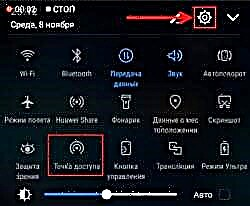
- In the settings, you need to click on the "More" or "Modem and Access Point" tab.
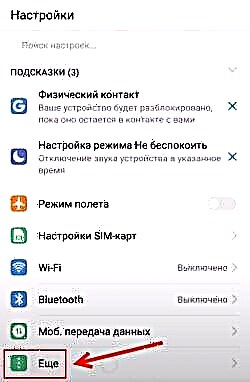
- Go to "Modem Mode" - "Wi-Fi Access Point".

- I immediately recommend going to the "Wi-Fi access point settings" to change the network name and password. The network name can be left as default. The encryption type must be set to WPA2-PSK. Set a password that will be used to connect to this Wi-Fi network.
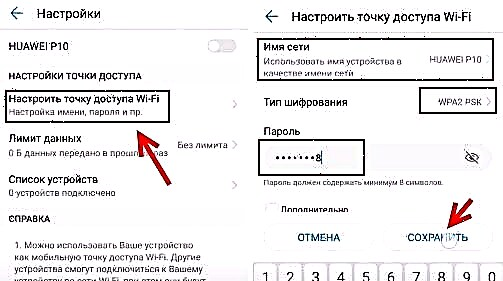
- You can turn on the access point.
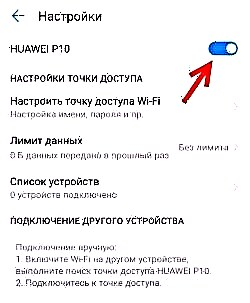
- The phone will start distributing a Wi-Fi network to which you can connect your devices using the set password. The connected devices will appear in the list of connected devices on the phone. Also in the settings, you can set a limit for data that can be transferred to other devices via an access point. If you distribute from phone to phone, then just turn on Wi-Fi, select a network from the list of available ones, enter the password and the connection will be established.
Related article: How to distribute the Internet from a Samsung smartphone (Android 7.0) via Wi-Fi.
IPhone
- Open the settings and go to "Modem Mode".

- There are not many access point settings on the iPhone. By clicking on "Wi-Fi Password" you can change the password. All.
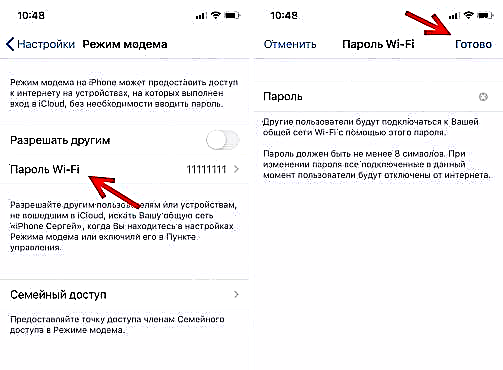
- To start the Wi-Fi access point, simply move the slider opposite "Allow others" to On.
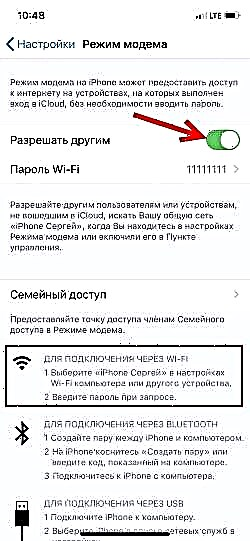 Pay attention to the instructions for connecting other devices via Wi-Fi. The network will be named "iPhone ...".
Pay attention to the instructions for connecting other devices via Wi-Fi. The network will be named "iPhone ...". - You can also use fast start modem mode.
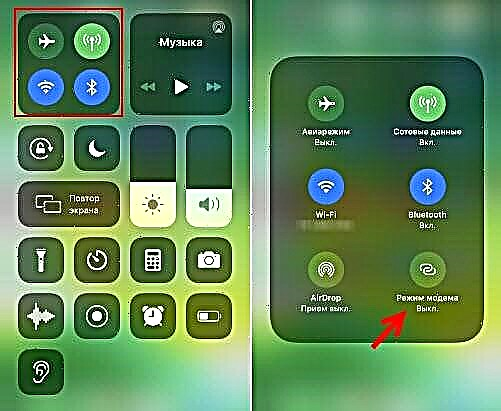
- Remember to turn off this mode when you are not using it. It is also advisable to put the phone on charge. When the iPhone is in modem mode, the battery drains quickly enough.
Sharing the Internet from the phone via USB
Most often, this method is used in order to share the Internet from a PC. Since stationary computers usually do not have a Wi-Fi receiver, and they cannot be connected to the phone's access point.

From an Android phone via USB, you can distribute the Internet only to computers with Windows 10, Windows 8, Windows 7, XP. On a Mac, you won't be able to distribute from Android via cable. But with the iPhone, you can share the Internet via USB with both Windows computers and Mac OS.
An Android phone can be connected to a Wi-Fi network and receive Internet through it, and not from a cellular operator. Work as a Wi-Fi receiver. If your phone has an active Wi-Fi connection, then try turning off the mobile Internet.
Android as a USB modem
- Connect your phone to your computer using a USB cable.
- We go into the settings, in the section "Modem and access point" or "More" - "Modem mode". We activate the item "USB-modem".
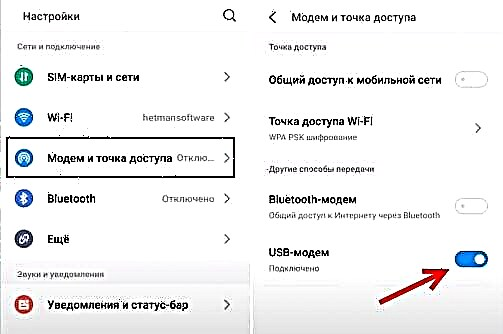
- Internet access should appear on the computer. A separate adapter (Remote NDIS based Internet Sharing) will appear in the Network Connections window.
More detailed instructions:
- Android phone as a modem for a computer via a USB cable
- Android phone as a Wi-Fi adapter for a computer
IPhone as USB tethering
- We connect the iPhone with a USB cable to the computer.
- In the settings, in the "Modem mode" section, activate the "Allow others" item.
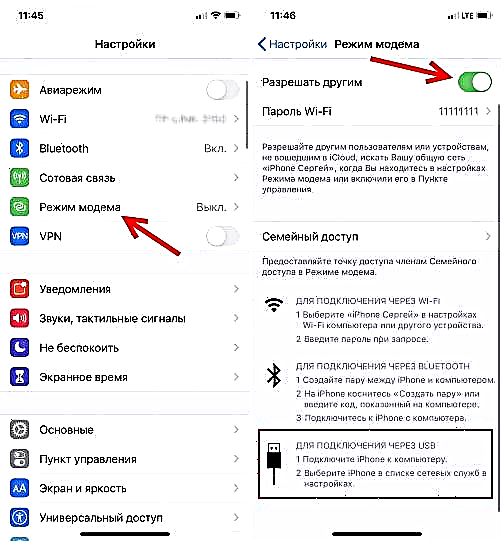
- After setup, an active internet connection appears on your computer.
- If it doesn't work, install iTunes on your computer, restart it and try to reconnect.
For more information on setting up this feature on an iPhone, see this article.
Bluetooth
I don't even know if it makes sense to set up a Bluetooth connection between devices, if you can use Wi-Fi or a cable. This is probably the most difficult and most problematic way.
- You need to pair your phone and computer. Connect your phone to your computer via Bluetooth.
- In the phone settings, enable the modem mode (Bluetooth modem).
Turn on Bluetooth on your phone (you may need to turn on discovery mode in the settings). Start a search for Bluetooth devices on your computer and select your phone. Most likely, to create a pair, you will need to confirm, or enter a code on one of the devices.
When the devices are connected, you need to activate the "Bluetooth modem" mode in the settings. It's on Android.

On the iPhone, just activate the modem mode with the switch next to "Allow others."

I wrote about this in more detail in the article Modem Mode on iPhone and iPad. How to distribute Internet from iPhone via Wi-Fi, USB and Bluetooth.
Additional Information
I think it will not be superfluous to have information on specific devices for which Internet distribution from a smartphone is configured. There, for each device, there are certain points that you need to know about.
Also, do not forget that a phone is not a router. And it cannot provide the same speed, connection stability and functionality. I do not recommend using your phone as a modem all the time. Better to install a regular, stationary router. If it is not possible to conduct cable Internet, then you can buy a USB modem and a router, and connect to the same YOTA, MTS, Beeline, etc.
From phone to phone or tablet
There are often situations when you need to distribute the Internet from phone to phone. For example, when there is no network on another phone, it is not paid, the tariff traffic runs out, etc. Or on a tablet, which can usually only connect to the Internet via Wi-Fi.

You just need to start the Wi-Fi hotspot on your phone (according to the instructions above) and connect another phone or tablet to this Wi-Fi network. Multiple devices can be connected. One phone distributes - the other accepts. It's simple.
From phone to computer or laptop
If you plan to distribute the Internet from your phone to a PC or laptop, then you can do this in three ways: via Wi-Fi, USB and Bluetooth. There are detailed instructions above in the article. If you have a laptop or desktop computer with Wi-Fi, then I recommend using Wi-Fi. This is the easiest and most convenient option. If Wi-Fi on the computer does not work, or it does not, then connect via USB. Well, as a last resort, you can try to share the Internet via Bluetooth.

As for the PC, the Wi-Fi receiver can be built into the motherboard. I recommend looking at its technical characteristics. If there is no built-in Wi-Fi, then you can use a USB Wi-Fi adapter.
From phone to TV
Owners of Smart TV TVs with Wi-Fi can easily configure the distribution of the Internet from the phone to the TV. Everything is as simple as possible: we launch a Wi-Fi access point on a smartphone and connect a TV to it. If you don't know how to connect your TV to a wireless network, then you can see the instructions on our website. Use the search on the site, or look in the "Smart TVs" section.

You cannot connect a TV via USB cable or Bluetooth.
From phone to router
And even so you can! For example, I somehow distributed the Internet from my phone to a TP-Link router. On my phone (I had it on Android), I started distributing Wi-Fi and connected the router to this network in WDS (wireless bridge) mode. Almost every router has a WDS mode, a Wi-Fi signal booster, a receiver, etc., which allows you to connect the router to the phone's Wi-Fi network. A conventional router has a much longer Wi-Fi range than a phone.
The router receives the Internet from the phone and distributes it to other devices via Wi-Fi and a network cable (you can connect the same PC, TV, set-top box).
Our site has instructions for setting up many routers in this mode of operation. For TP-Link, D-Link, ASUS, Zyxel Keenetic, etc. Search through the site search, or ask in the comments, I will give a link.
There are restrictions when distributing, low speed, no Internet access
It happens that we set up the distribution of the Internet, everything works on the phone, connected other devices, but the Internet does not work on them. Or it works, but very slowly, low speed. Or maybe it works only for a while, after which the message "without access to the Internet" appears. It happens that an SMS comes from the operator, with information about the write-off of a certain amount, or that the traffic limit is running out.
All of this can be for various reasons. For example, low speed due to the fact that your phone does not even catch 3G, but uses the 2G network. Or "without access to the Internet" on the same computer due to some problem in Windows (in this case, try to distribute to another computer). But most often the reason is the restrictions on the part of the mobile operator.
I wrote about this at the very beginning of the article. Indeed, now almost all operators, on almost all tariff plans, either completely prohibit their subscribers from distributing the Internet to other devices, or they restrict this opportunity, or charge an additional fee for it. Even at unlimited tariffs. I already talked about this in a separate article: the Internet does not work when distributing from the phone.
If this is your case, then there are not many options:
- Agree to the terms of the operator (usually an additional fee).
- Do not distribute the Internet from your smartphone. Or change the tariff to another, where it is allowed to do so.
- Use a variety of ways to bypass blocking. You can find current solutions in the comments to the article at the link above. Only if earlier it was not difficult to bypass these restrictions, then in 2020 the same MTS began to use more serious technologies to identify "violators". In addition to TTL, they track on requests that come from devices you connected. For example, when Windows, antivirus, or other programs are updated. There are requests that should not be when using an Internet connection only on the phone.
I look forward to your messages in the comments! Ask questions, and of course share your experience!








 Pay attention to the instructions for connecting other devices via Wi-Fi. The network will be named "iPhone ...".
Pay attention to the instructions for connecting other devices via Wi-Fi. The network will be named "iPhone ...".



